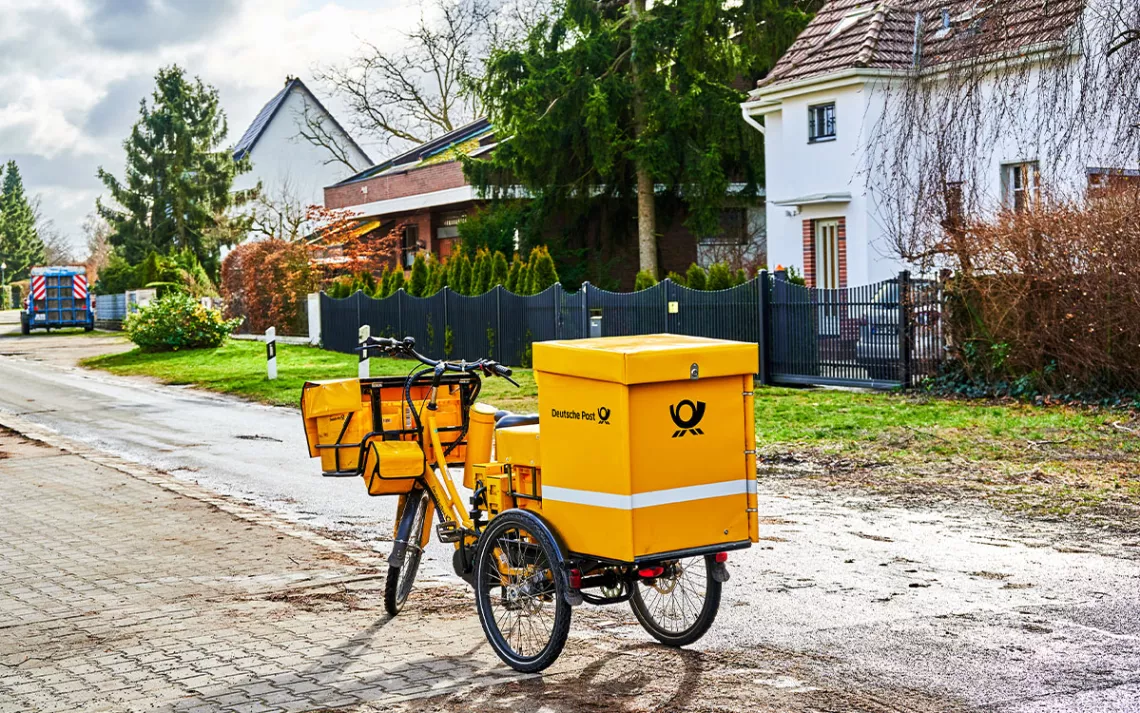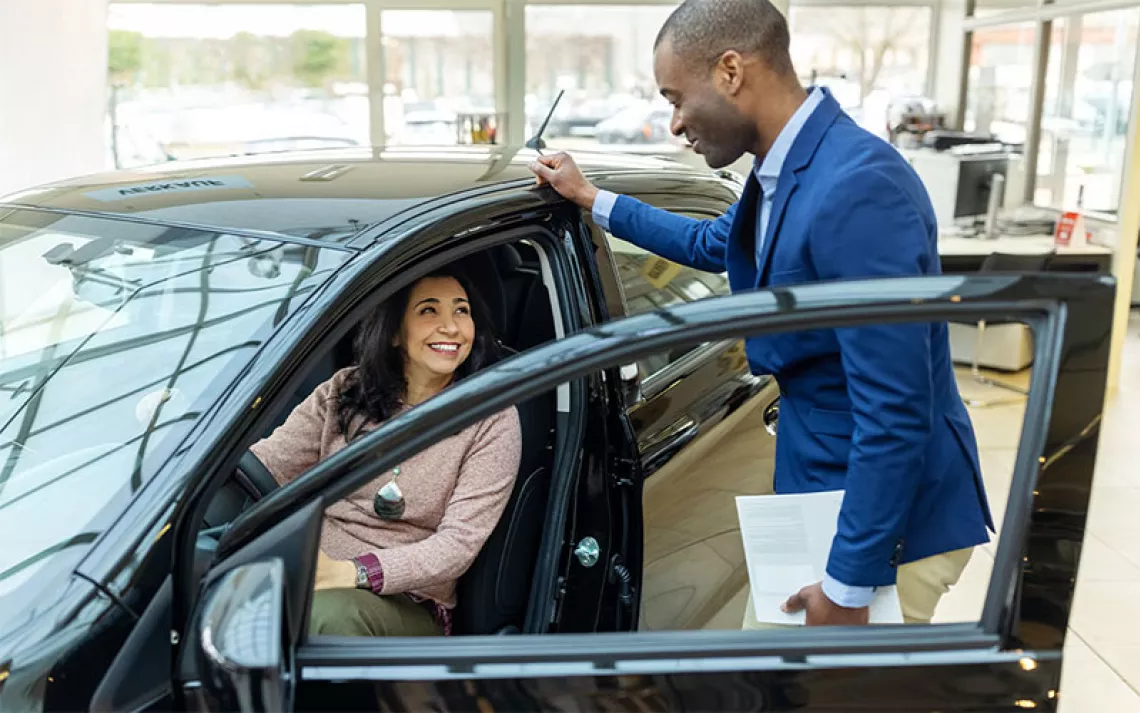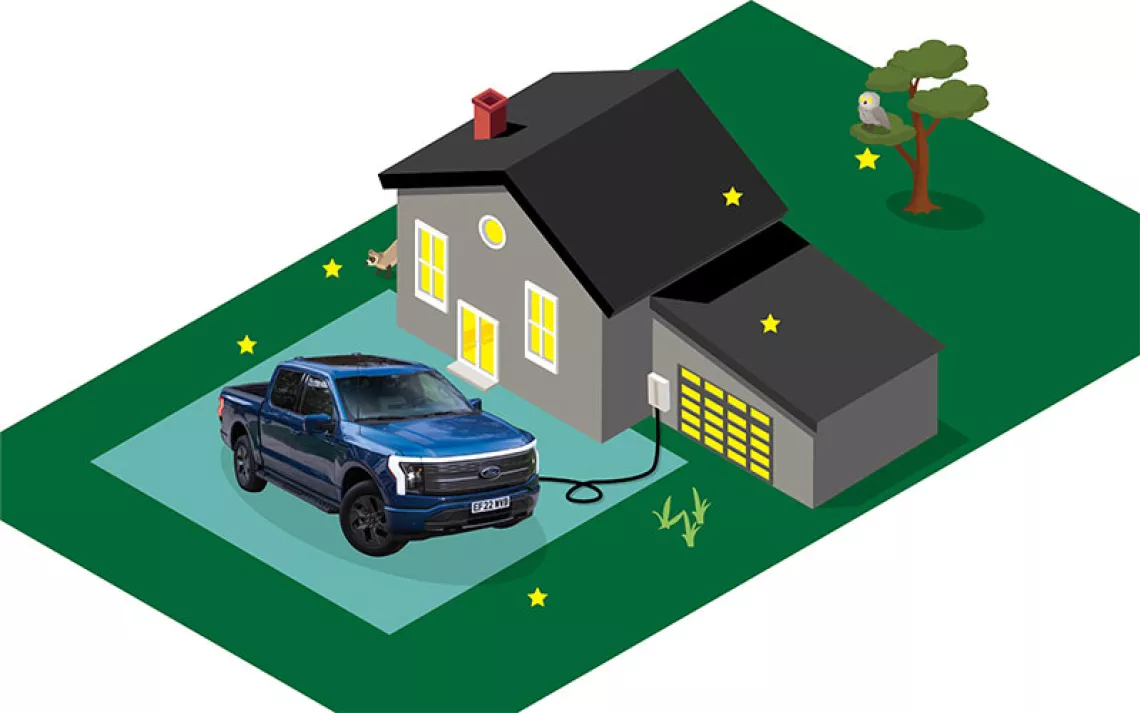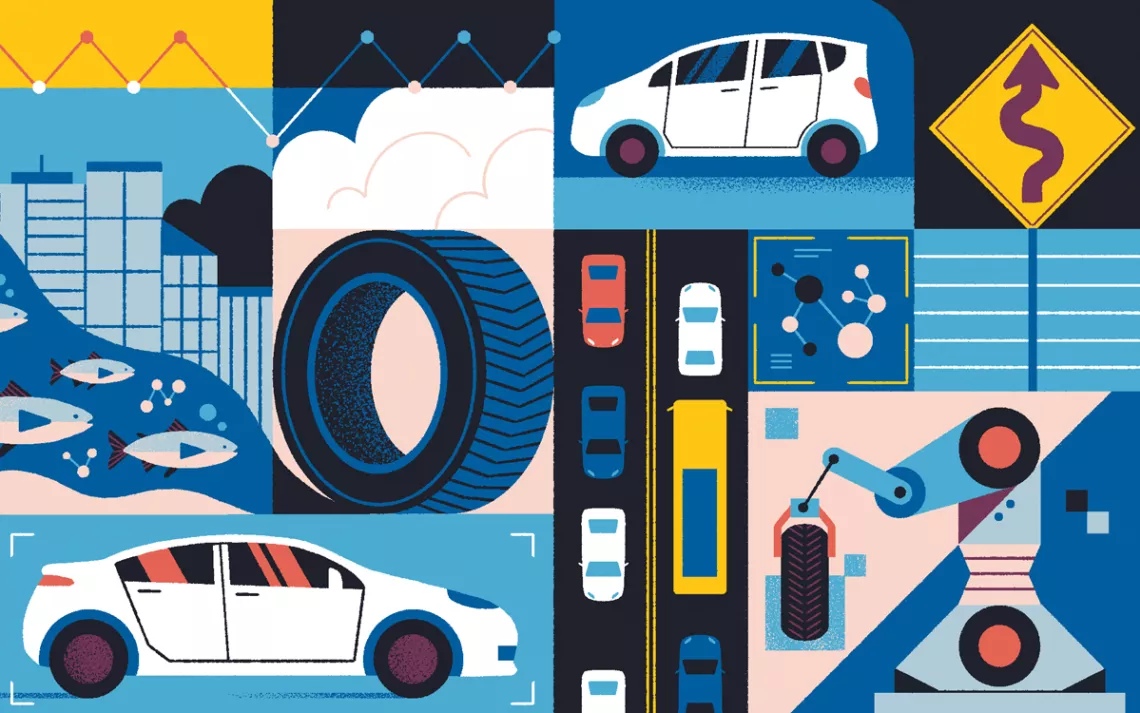Driving Less May Be As Easy As Riding a Bike—A Big Electric One
Cargo e-bikes are catching on and could curb US car emissions

Photo by Mickis-Fotowelt/iStock
When I first hop onto the 70-pound bicycle, my balance is a bit off-kilter. Two tubs flank the front wheel, and the back is outfitted with two larger containers and a sturdy metal rack. On a brisk afternoon in mid-May, I wobble my way into the bike lane that loops through New York City’s Central Park, dodging joggers, horse-drawn carriages and other, far more confident cyclists.
Soon enough, however, I’m gliding. My soft-blue bike has a 500-watt-hour Bosch battery system that takes most of the effort out of pedaling. With a flick of my left thumb, I can ratchet up or down the level of juice from a handlebar controller. I zip my way up Harlem Hill without breaking a sweat, breezing by riders on their “acoustic,” or traditional, versions.
Trek, one of the world’s largest e-bike makers, has invited reporters here to test-ride its latest line of cargo models, which boast extra carrying capacity to enable riders to do more things with bikes that they would usually do with cars. The Wisconsin-based company is among the growing group of manufacturers and cycling advocates that are hoping to turn pedal power into a more practical, accessible and compelling replacement for vehicles.
As a newcomer to the cargo bike, I’m curious to try out a form of transportation that’s becoming increasingly popular around the United States.
Americans are hopping on electric two- and three-wheelers not just for joyriding but also for commuting to work, going grocery shopping and shuttling kids to school—trips they would’ve otherwise taken in their cars and minivans. Electric bicycles have also become the de facto mode of transportation for many app-based delivery workers in major cities. As a result, riders are starting to reduce the amount of planet-warming gases and toxic air pollutants that spew from gas-guzzling engines.
Initially, the outbreak of the Covid-19 pandemic helped fuel a surge in e-bike sales as people looked to escape their homes and find safer ways to commute. Today, with more US cities and states subsidizing e-bikes, adoption continues to rise: Some 3 million battery-powered bicycles are now in use across the country, Ed Benjamin, chairman of the Light Electric Vehicle Association, tells me later by phone.
In 2022, the United States imported 1.1 million e-bikes, a number that serves as a useful proxy for sales figures since nearly all models are manufactured in Asia, he says. That’s more than double the amount imported in 2020 and up 40 percent from 2021’s figures.
Benjamin predicts the US will import some 1.3 million e-bikes this year. While he doesn’t yet have solid data on how many imports are cargo bikes—like the ones I’m taking for a spin in Central Park—he says he’s “optimistic” about the category’s prospects.
“Those of us in the industry think it’s going to be a big deal,” he says from Fort Myers, Florida, where he recently replaced his Toyota Tacoma pickup truck with an electric cargo bike. “At first, I thought this was going to be a hardship,” he recalls. “Instead, I learned that for 99 percent of what I do, a cargo bike is fine.”

Andrew Tablante of Trek describes the cargo e-bike models before a Central Park test ride. | Photo by Maria Gallucci/Canary Media
Safer cycling and more affordable models are key
While the e-bike boom is fairly recent, it builds on another development that’s been in the works for years, researchers say.
In Benjamin’s hometown in Florida and other cities across the country, local governments have invested heavily in cycling infrastructure over the last decade to make riding easier and safer for everyone. That can include installing protected bike lanes, making street-adjacent bike paths and adding dedicated traffic signals and clearer road signage.
“E-bikes are great for breaking down barriers like, ‘I don’t want to go to work sweaty,’ or for reducing the amount of effort to go up a hill,” says John MacArthur, a program manager for the Transportation Research and Education Center at Portland State University in Oregon.
“But without safe infrastructure, you’re still not going to get a lot of people bicycling,” he adds.
Cities still have far to go when it comes to improving road safety. In New York City, at least 15 cyclists have died so far this year. In my own neighborhood in Brooklyn, bike paths are frequently blocked by idling trucks and double-parked vehicles, forcing riders to swerve into traffic and dodge car doors that suddenly swing open.
Another barrier for would-be e-bike riders is the price tag.
Buying a new model is certainly cheaper than buying a new car. And charging a battery—either by removing it and plugging into a wall charger, or plugging in the bike itself—typically costs less than refilling a car’s gas tank. But that doesn’t mean the micromobility devices come cheap.
The first Trek bike I try, the Fetch+ 2, retails online for $6,000. The second bike, the Fetch+ 4, lists for $8,500. The latter model has a 750-watt-hour battery system and a large box in the front that can seat four small children, seatbelts and all. These tricked-out cargo bikes are at the higher end of the e-bike market. A recent roundup of reliable, no-frills two-wheelers lists options from $899 to $1,900.
Fortunately, at least when it comes to alleviating sticker shock, a growing number of cities and states are offering financial incentives to help low- and moderate-income households afford new e-bikes.
Nearly 140 local programs are now available throughout the United States, according to an online database run by MacArthur and his colleagues at Portland State. A federal E-BIKE Act is being considered in Congress to provide tax credits for e-bike purchases, though previous attempts to pass the legislation have failed.
Many of these incentive programs are specifically intended to ease car traffic and reduce the associated tailpipe pollution.
Minnesota lawmakers recently passed a $1.3 billion infrastructure law designed to reduce transportation-related emissions, including by providing rebates worth up to $1,500 for electric-bicycle buyers. Earlier this month, Colorado announced details of a $12 million e-bike program that’s being funded by a 2022 air-quality improvement law. State lawmakers also approved a $450 tax rebate in May that residents at any income level can receive toward an e-bike purchase next year.
“Our hope is that by bringing down the cost of the bike and making it more accessible, we’ll be able to convert a lot of those people to use e-bikes for general errand-running or commuting,” says Sarah Thorne, who is administering the e-bike program for the Colorado Energy Office.
That’s already largely happening in cities with existing programs, early research shows.
Consider Denver, whose e-bike program is becoming the model for local incentive schemes. Last year, the city budgeted about $3 million for instant e-bike rebates, which was funded through a voter-approved sales tax. Residents received rebates worth $400 or $1,200, depending on their income status, plus an additional $500rebate for cargo e-bikes.
Over nine months in 2022, more than 4,700 residents became new e-bike owners. Those who responded to a survey said they rode their e-bikes an average of 26 miles per week, replacing 3.4 round-trip vehicle outings. Over 70 percent of respondents reported using their gas vehicles less often after purchasing their e-bikes, according to research by RMI, a clean-energy think tank. (Canary Media is an independent affiliate of RMI.)
All told, the program is estimated to have avoided about 2,000 metric tons of carbon dioxide in a year—the equivalent of taking nearly 450 gas-powered passenger cars off the road for one year.
In Denver and beyond, “We’re starting to see that there is a substitution effect,” MacArthur says.
“This feels like the year of the e-bike, with all the incentives happening,” he adds. “Now there’s a political will to say, ‘Hey, this is worthwhile.’”
Helping more people to afford e-bikes can have another crucial benefit beyond spurring them to ditch cars. Incentive programs can also help address increasingly urgent concerns around e-bike battery fires. In New York City and other urban hubs, a proliferation of low-quality devices and dangerous charging practices has caused a rash of deadly fires inside apartment buildings. Offering rebates for e-bikes with certified batteries would ensure more people can access safer devices, experts say.
Along with the growing, if imperfect, investments in safe cycling infrastructure, MacArthur says another reason why e-bike programs are surging is that more municipalities have adopted regulations to reflect the changing transportation landscape.
Advocacy groups have pushed in recent years to update state traffic codes to better accommodate electric bikes. People for Bikes, whose members include major bike manufacturers, helped create the three-tiered classification system for regulating battery-powered mobility devices. The bikes I tried in Central Park are considered Class 1 since the battery system kicks in only when I’m pedaling and I can’t go faster than 20 miles per hour.
Bicycle makers are also designing models to be more physically accessible to a wider range of users.
Laura Belmar, CEO of Integral Electrics, tells me she launched her e-bike company earlier this year after struggling to handle a cargo bike while hauling her two young children in the rear seats. “I realized that it wasn’t about strength or fitness, but more about the design of the bike,” she says from her home in Asheville, North Carolina.
Belmar’s startup designs bikes with a low center of gravity, 20-inch wheels and rear racks that sit below the rider’s hip height. A front-loading cargo bike, which has a box for kids, has a third wheel to provide extra stability. “We try to make bikes that are going to be easily shared between two partners in a household, who might have very different form factors,” she says.
As a first-timer with short legs, for whom attempting to stay upright in a behemoth, kid-toting cargo bike was an exercise in humility, Belmar’s point resonates with me.
But even if barriers may remain for some, it’s clear as I cruise around Central Park that battery power is hardly a novelty now.
Riders renting clunky silver electric CitiBikes join me in the effortless climb uphill. A group of friends on battery-powered stand-up scooters rip by me at top speed. Delivery workers carrying takeout food cut through the park on their commute, with large rectangular battery packs attached to their bike frames. In time, the vision the e-bike industry and advocates share is that this menagerie of battery-powered devices becomes the norm—not just on bike trails like this, but on city streets as well, sharing space with a dwindling fleet of passenger vehicles.
 The Magazine of The Sierra Club
The Magazine of The Sierra Club



